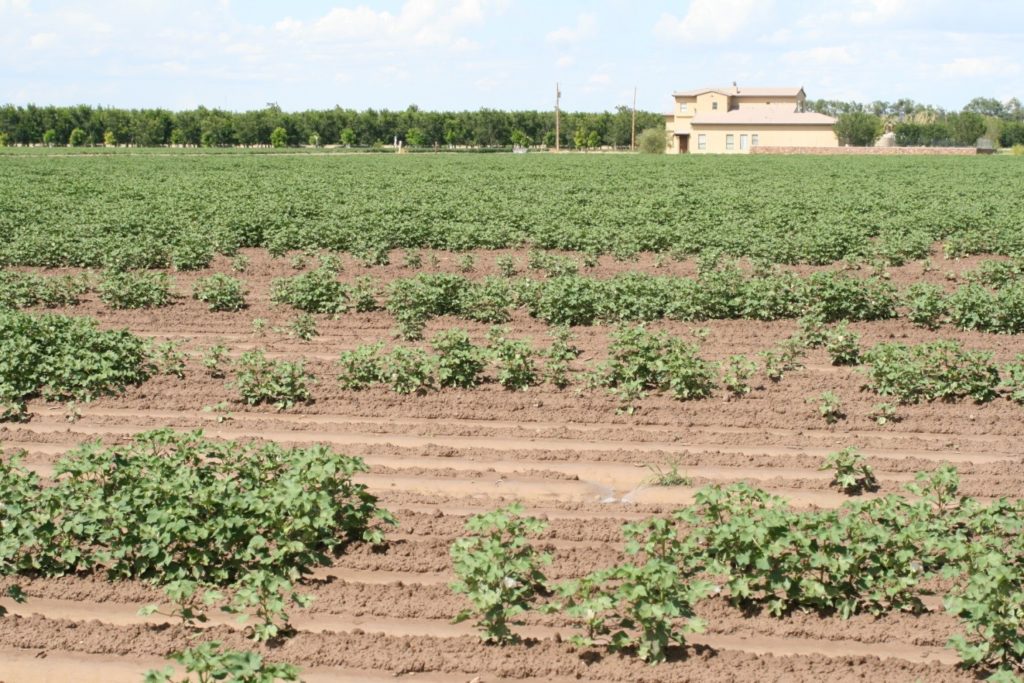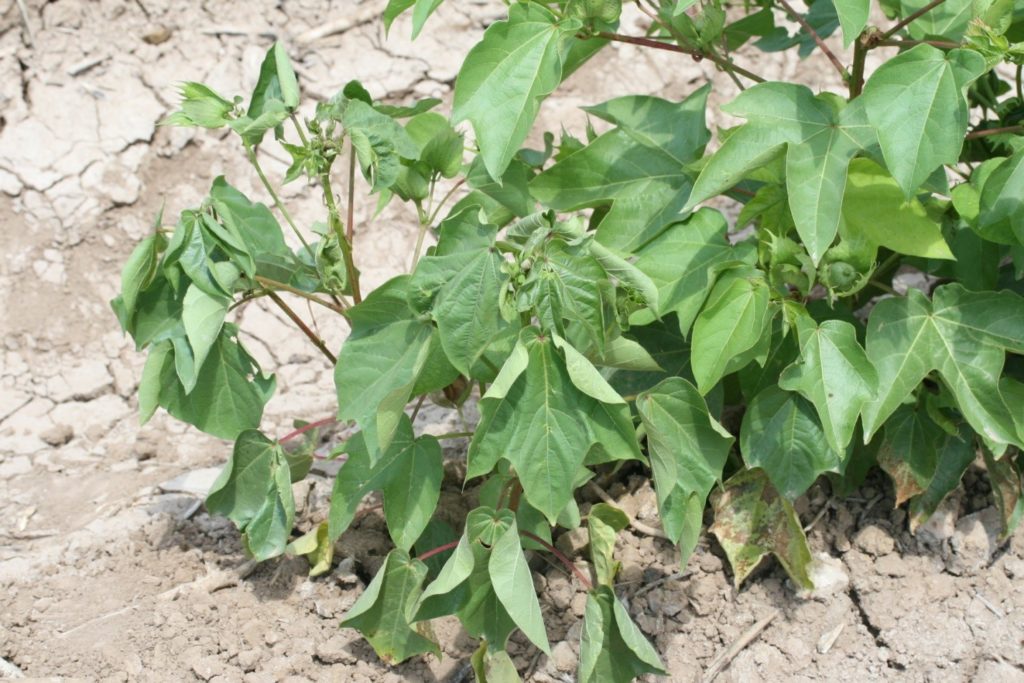by Dr. Tom Isakeit, Extension Plant Pathologist and Dr. Gaylon Morgan, Extension Cotton Agronomist
During the summer of 2017, a new race of the Fusarium wilt fungus (Fusarium oxysporum f. sp. vasinfectum) infecting cotton was confirmed in many fields in El Paso and Hudspeth counties. This particular variant is known as “race 4” (FOV4). Previously, FOV4 was limited to the San Joaquin Valley of California. With plant pathogens, a race is defined as the ability to cause, or not cause disease, in particular varieties of the host plant. For many plant diseases that are controlled primarily through host resistance, the occurrence of a new race requires ever more work by plant breeders to develop new resistant varieties. FOV4 causes the same wilt symptom (Figure 1) that is typically seen with the other races that have long been present in Texas, primarily in the southern High Plains. However, FOV4 is a more aggressive pathogen than the other races and its movement into other areas of the state needs to be prevented.
The pathogen can move through contaminated soil and seed. The most significant movement of the pathogen is within fields where it is already present. Over time, with repeated tillage operations, the pathogen-infested area in the field will increase (Figure 2). Contaminated soil attached to tractor tires or implements can be transported to non-infested fields. This is most likely to occur within El Paso and Hudspeth counties, but there is also a risk if there is movement from these counties to other areas. Soil and plant material should be cleaned from farm equipment (preferably pressure washed with soap) before moving them outside of these counties. This is similar to the level of precaution needed to prevent movement of the reniform nematode to non-infested fields.

Figure 2. Bare area in a field of cotton because of plants killed earlier in the season by Fusarium wilt fungus, race 4.
With contaminated seed, perhaps the greatest risk of long-distance movement of the pathogen is through “brown bag” seed produced in El Paso and Hudspeth counties. In a test of three lots of seed from “brown bag” Pima varieties grown in 2017, we found a high level of contamination (approximately 1%). The fungus was inside the seed coat and grew from the seed in spite of acid delinting and seed fungicide treatments.
The long-term control of FOV4 will be through developing resistant varieties. Tolerant Pima varieties have already been identified. Research to identify resistant Upland varieties started in the 2018 growing season by Texas AgriLife Research cotton breeders and other breeders in the public sector. However, it would be preferable to prevent or limit movement of FOV4 into other cotton-production areas. A new bulletin titled “FUSARIUM WILT RACE 4 DISEASE OF COTTON IN TEXAS” provides more details on FOV4.

Thomas Isakeit, Ph.D.
Professor and Extension Plant Pathologist
College Station, TX
t-isakeit@exchange.tamu.edu
